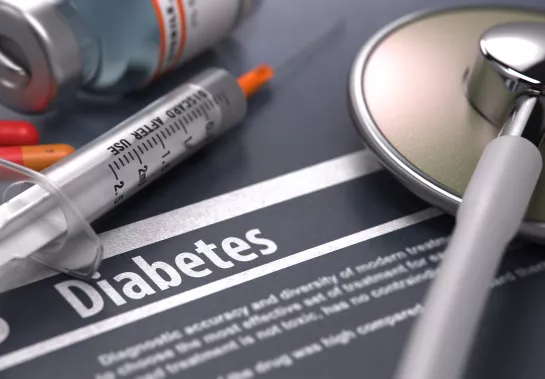Implementation of insulin copayment caps not associated with an increase in insulin use among commercially insured populations


Boston, MA – A new study led by Harvard Pilgrim Health Care Institute and Duke University researchers found that state policies intended to reduce insulin out-of-pocket (OOP) costs for commercially insured people were not associated with increased insulin use in the overall population. However, monthly insulin OOP costs declined substantially for members in high deductible health plans with health savings accounts, plans that generally require high insulin OOP payments.
The study, “Association of State Insulin Out-of-Pocket Caps With Insulin Cost-Sharing and Use Among Commercially Insured Patients With Diabetes,” appears in the March 26 edition of Annals of Internal Medicine.
Insulin adherence is critical for preventing diabetes-related complications, but rising OOP costs can create barriers to access. Insulin prices have drawn increasing attention from policymakers. President Biden's 2023 and 2024 State of the Union addresses called for a national $35 insulin OOP cap for commercially insured persons. A similar policy was recently enacted among Medicare Part D beneficiaries, and early evidence demonstrated an association with increasing monthly insulin fills. Though 25 states have adopted $25 to $100 insulin OOP cap policies aimed at commercially insured populations since 2020, little is known about their effectiveness.
“Understanding the impact of existing state insulin caps on insulin use and out-of-pocket costs in a commercially insured population provides important evidence for policy-makers at the state and federal level,” said Laura Garabedian, Harvard Medical School assistant professor of Population Medicine at the Harvard Pilgrim Health Care Institute, and lead author of the study. “In addition to analyzing the overall impact of insulin cap policies, we examined the impact of different cap amounts and among members of different plan types, since the commercially insured face wide variation in insulin out-of-pocket costs depending on their health insurance plan type.”
The study team compared states that adopted insulin cap policies in January 2021 versus those that did not. They found that state insulin caps were associated with reduced insulin OOP costs, particularly for members in high-deductible health plans with health savings accounts (HSA), which require high insulin OOP payments until the annual deductible is reached. Insulin users in intervention states in HSA plans saw a 17.4% relative reduction in OOP costs, with higher savings (40%) in states with lower caps ($25 to $30), both driven by reductions among enrollees in HSA plans. However, the vast majority (>80%) of the study population, who did not have such HSAs or health reimbursement arrangements, did not experience reduced insulin OOP costs. Compared to lower-income insulin users in states with caps, higher-income insulin users had higher average insulin OOP costs pre-policy and experienced larger-magnitude decreases in OOP costs following the insulin cap policies.
Despite cost savings seen among selected groups, the team found no increase in insulin use overall, and in most subgroups.
“Our findings suggest that the proposed national $35 insulin cap for commercially insured persons would reduce OOP costs by a large degree for HSA plan members but have little effect on OOP costs for nonaccount plan members, who comprise the vast majority of the commercial market,” Dr. Garabedian and colleagues wrote. “Such changes might preferentially benefit higher-income insulin users, and insulin use might not change except perhaps among lower-income HSA members. It is also important to note that even a national policy that successfully reduces patient-facing insulin OOP costs might be unlikely to contain long-term insulin price inflation, which is ultimately passed on to health plan members through premium increases. Solutions are therefore needed that decrease actual insulin prices.”
“Patients and clinicians need to be aware of these out-of-pocket caps, and know who is eligible, to facilitate appropriate therapy among patients with cost-related insulin underuse,” added Dr. Garabedian. “While these policies are a start, improving insulin underuse, especially in vulnerable populations, is likely to be a more complex and challenging issue than high-level policies can address.”
About the Harvard Pilgrim Health Care Institute’s Department of Population Medicine
The Harvard Pilgrim Health Care Institute's Department of Population Medicine is a unique collaboration between Harvard Pilgrim Health Care and Harvard Medical School. Created in 1992, it is the first appointing medical school department in the United States based in a health plan. The Institute focuses on improving health care delivery and population health through innovative research and education, in partnership with health plans, delivery systems, and public health agencies. Point32Health is the parent company of Harvard Pilgrim Health Care and Tufts Health Plan. Follow us on Twitter and LinkedIn.